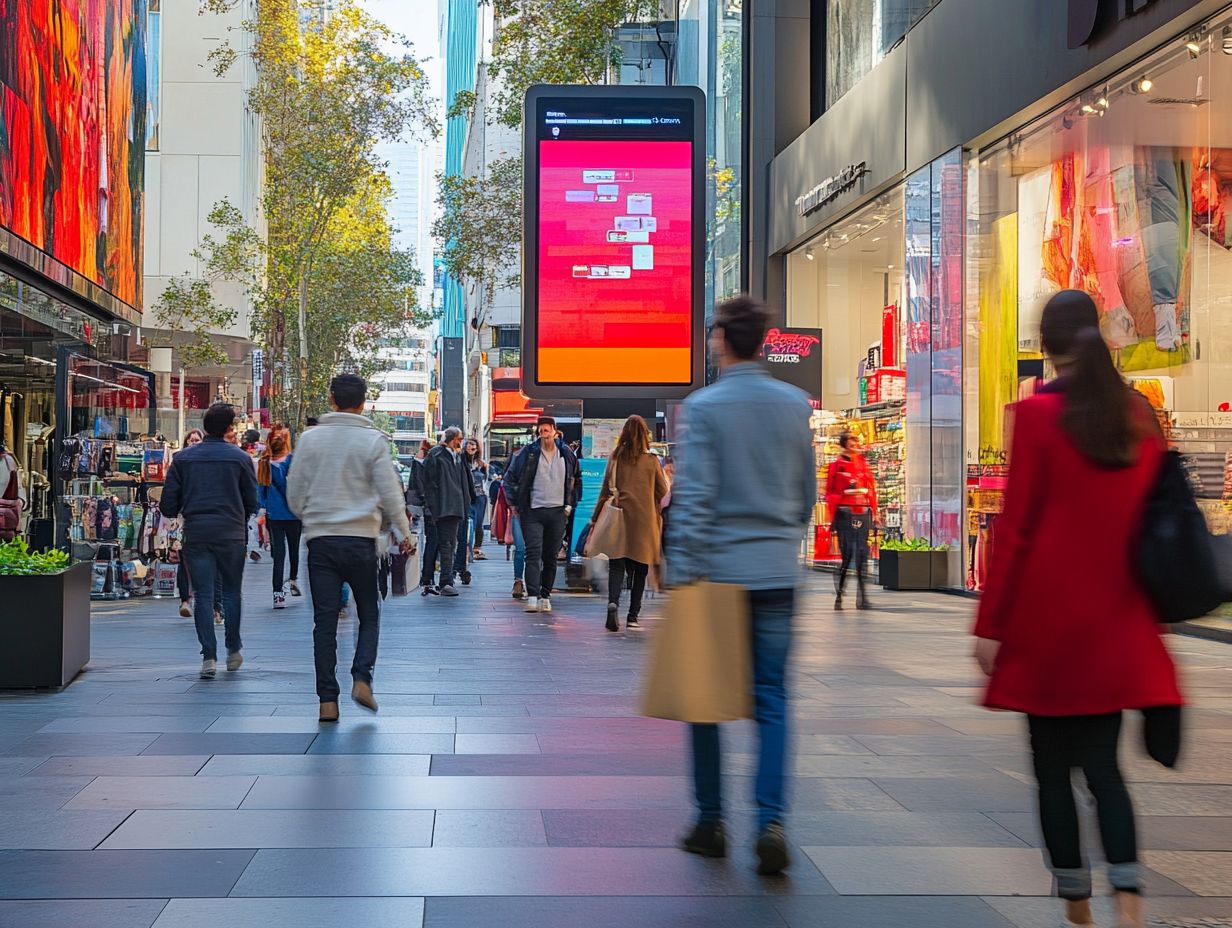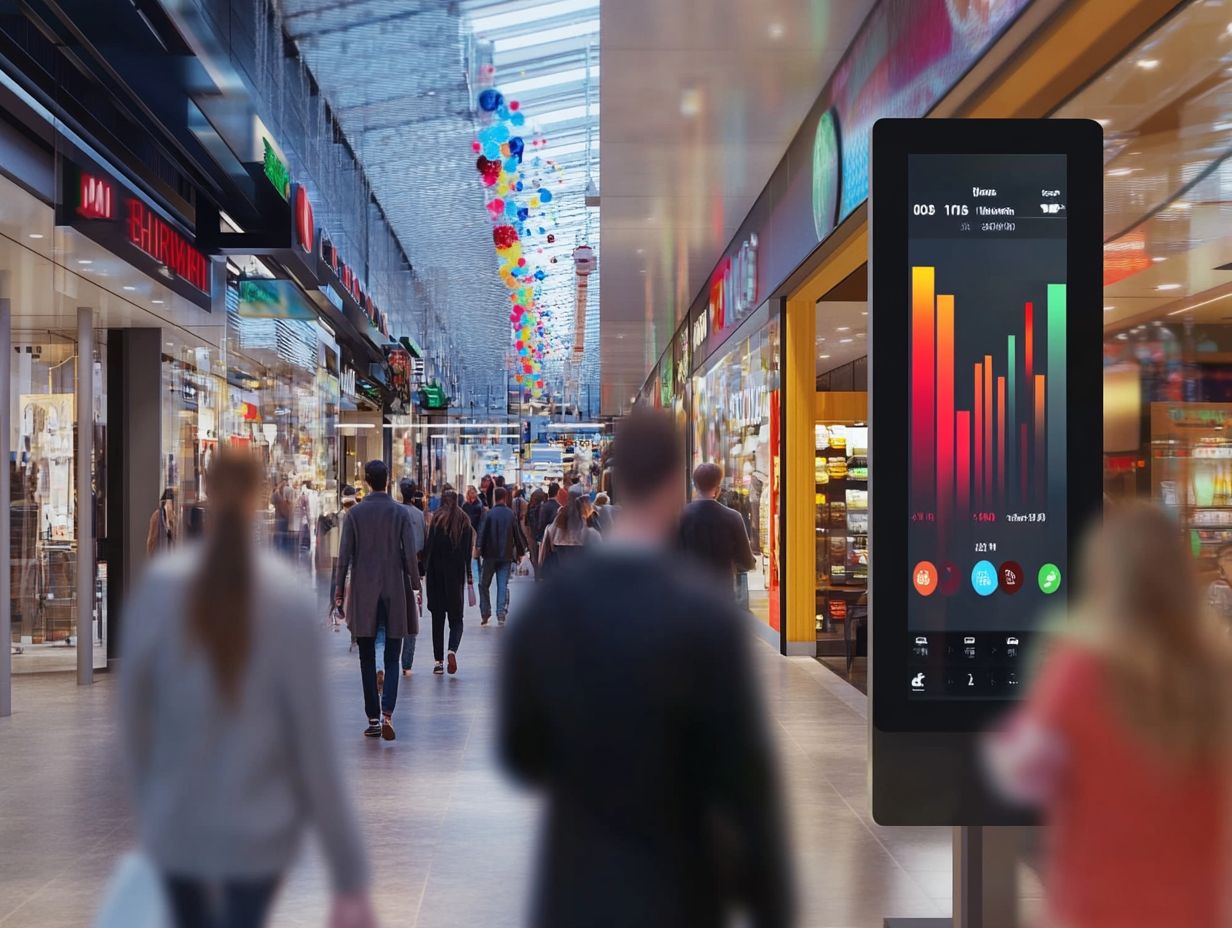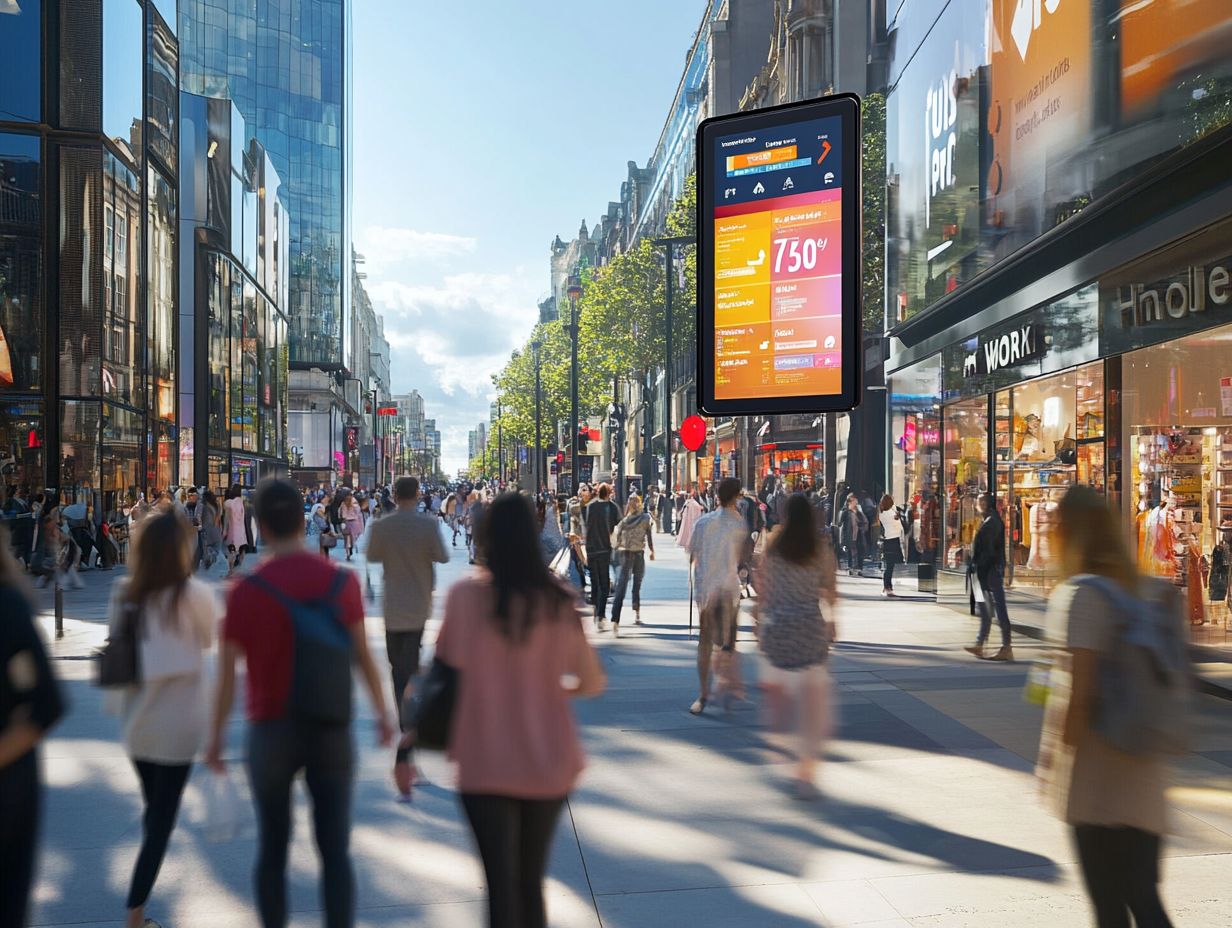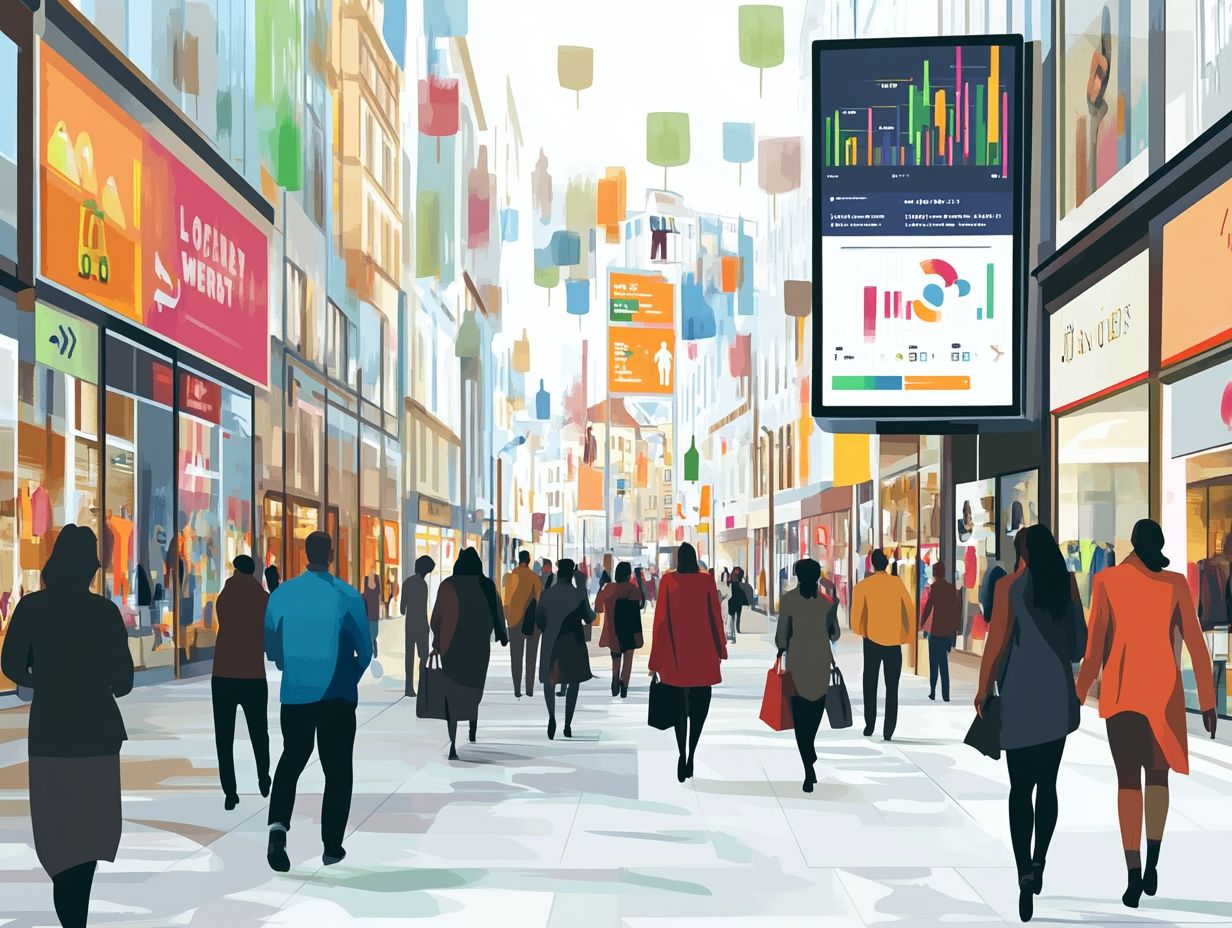Understanding consumer behavior is essential for success in today’s competitive retail landscape. The term “foot traffic data” refers to information that tracks the movement of potential customers in and around retail spaces, and it is often used in predictive forecasting. This article examines various sources of foot traffic data, comparing the effectiveness of traditional methods with modern technological advancements. It further explores the benefits of integrating this data for improved accuracy, addresses the challenges associated with data collection and privacy, and presents strategies for effectively utilizing foot traffic insights in retail forecasting.
Defining Foot Traffic Data and Its Role in Predictive Retail Forecasting

Footfall analysis is a critical component in understanding consumer behavior in the retail industry. It involves tracking the number of shoppers visiting a store over a specific period, providing key insights for predictive forecasting.
Foot traffic data is crucial for predictive retail forecasting as it offers valuable insights into customer behavior, enabling retailers to make informed decisions. This data encompasses a variety of retail metrics, including visit frequency, traffic patterns, and customer engagement, which contribute to more accurate sales predictions and enhanced operational efficiency.
Analyzing foot traffic trends helps businesses understand shopper behavior, assess store effectiveness, and develop effective marketing strategies that align with market trends and demographic data. By incorporating foot traffic data into predictive analytics and retail analytics, retailers can create more precise sales forecasts since it reveals trends that correlate with purchasing behaviors.
For instance, technologies such as heat maps can illustrate areas with the highest customer engagement, while traffic counters provide accurate counts of shoppers entering or exiting a store. These measurements equip retail managers with the information necessary to adjust staffing and inventory levels in line with anticipated customer foot traffic, particularly during peak periods.
Additionally, data visualization tools offer various methods for displaying foot traffic trends over time, facilitating informed decisions that can drive sales growth and enhance the customer experience through improved store performance and consumer engagement.
Sources of Foot Traffic Data and Retail Metrics
Foot traffic data can be collected from various sources, including location data, foot traffic measurement tools, and visitor tracking systems that offer real-time data analytics.
These sources provide businesses with valuable insights into shopper demographics, economic indicators, and seasonal trends, enabling them to develop a comprehensive understanding of customer journeys, shopping habits, and consumer insights.
Additionally, historical data allows retailers to conduct trend analyses and customize their marketing strategies based on past consumer behavior.
Traditional Methods vs. Modern Technology in Foot Traffic Analytics

Traditional methods of measuring foot traffic, such as manual counting and observational techniques, are often inaccurate and time-consuming, affecting the reliability of footfall analysis.
In contrast, modern technology employs advanced analytics and data collection tools, including sensors, mobile apps, and cameras, to provide real-time tracking and more precise traffic analytics, enhancing the overall retail performance.
These technological advancements enable retailers to analyze foot traffic patterns, optimize store layouts, and enhance shopper engagement through data-driven decisions and machine learning techniques.
For instance, tools like heat maps generated from shopper movement data allow businesses to identify high-density areas within their stores, thereby improving merchandising strategies.
Additionally, mobile applications can track customer flow not only inside the store but also in the surrounding area, facilitating tailored marketing efforts.
Unlike static tracking methods that offer a limited snapshot of customer behavior, these modern approaches provide invaluable insights over time, enabling continuous adjustments to enhance the shopping experience.
Ultimately, adopting technology-driven strategies significantly improves a store’s ability to convert foot traffic into sales, optimizing sales performance through enhanced data-driven decisions.
Benefits of Incorporating Foot Traffic Data in Retail Forecasting
Foot traffic data plays a crucial role in retail forecasting by enhancing the accuracy and efficiency of sales projections. It provides retailers with predictive insights and consumer insights that are integral to their business intelligence strategies.
When analyzed in conjunction with sales data and other consumer behavioral metrics, foot traffic data helps retailers optimize inventory management, increase shopper engagement, and refine marketing strategies to align with seasonal trends, customer preferences, and overall business intelligence.
This approach enables data-driven decision-making that boosts sales conversion rates and overall retail performance.
Improved Accuracy and Efficiency

Utilizing foot traffic data in retail sales forecasting enhances accuracy and efficiency by providing retailers with clear insights into foot traffic trends and customer behaviors. These insights allow businesses to implement predictive modeling techniques, refining their ability to forecast demand, optimize inventory levels, improve conversion rates, and apply AI in retail, ultimately leading to increased sales and operational efficiencies.
For instance, a prominent apparel retailer leveraged foot traffic analytics to identify peak shopping hours, allowing them to adjust staffing levels and create promotional events aligned with consumer behavior and shopping trends. By anticipating busy periods, they were able to enhance customer service and achieve a 40% increase in conversion rates.
Similarly, a leading electronics store used foot traffic data to strategically determine product placement, ensuring that popular items were prominently displayed during peak times, resulting in a 20% increase in total sales and improved visual merchandising.
Challenges and Limitations of Using Foot Traffic Data and Retail Analytics
Using foot traffic data presents several challenges, including difficulties in data collection, privacy concerns, inaccuracies in the data itself, and managing data from external factors.
Despite the high value of foot traffic data, retailers must navigate complex consumer trends while also complying with data protection regulations, which can diminish the effectiveness of their foot traffic analytics.
To maximize the value of foot traffic data for retail forecasting, these challenges must be addressed and overcome.
Data Collection and Privacy Concerns

Data collection methods for foot traffic analysis pose privacy risks, particularly concerning the collection and use of consumer metrics. Retailers must be aware of and comply with data protection laws while being transparent about their data collection methodologies to maintain customer trust and address ethical concerns regarding the use of personal information.
In today’s data-driven world, it is essential to understand the nuances of various collection methods. Techniques such as Wi-Fi tracking, mobile device monitoring, and other retail technology can yield valuable insights into customer behavior and preferences; however, they also have the potential to infringe on individual privacy.
To mitigate these risks, businesses should adopt best practices that ensure the ethical use of consumer metrics and customer insights. This includes:
- Obtaining informed consent
- Minimizing data retention periods
- Establishing robust security protocols
Promoting transparent data usage policies and providing customers with the option to opt out of tracking are also vital components of ethical data collection practices.
Strategies for Utilizing Foot Traffic Data in Retail Forecasting
The strategies for utilizing foot traffic data in retail forecasting are diverse, but the most effective ones involve creating a system that integrates multiple data sources and analytical tools to enhance marketing strategies, sales performance, and overall business strategy.
Foot traffic data is particularly valuable when used alongside other customer insights, such as customer segmentation. By aligning foot traffic data with sales data, retailers can develop targeted marketing campaigns that boost shopper engagement and customer loyalty.
This approach results in improved returns on investment (ROIs) regarding marketing expenditures, promotional effectiveness, and overall operational efficiency.
Integrating Foot Traffic Data with Other Data Sources and Analytical Tools
Integrating foot traffic data with other data sources and analytical tools is essential for enhancing retail analytics and improving business intelligence capabilities. By combining insights from foot traffic with point-of-sale data, demographic information, and location intelligence, retailers can gain a more comprehensive understanding of their operations and customer behaviors. This holistic approach leads to better data visualization, trend analysis, and more knowledge-based decision-making processes.
Such integration allows retailers to identify trends and patterns that might otherwise remain unnoticed, enabling the development of more targeted marketing strategies and effective inventory management. For instance, correlating foot traffic patterns with sales data can reveal peak shopping times and preferred products, allowing businesses to optimize staffing, stock levels, and sales channels.
Additionally, using location analytics to assess nearby competitor activity or local events offers invaluable context that enhances competitor insights and overall competitive analysis.
This multidimensional analytical approach not only drives operational efficiency but also fosters a deeper connection with customers, ultimately enriching the shopping experience and improving customer retention.






